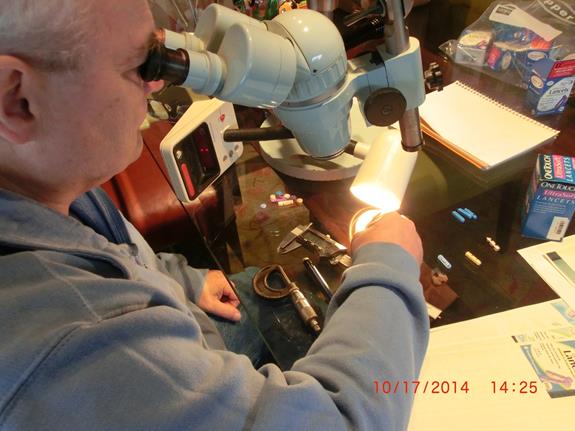By
Dr. Christopher Jacobs Ph.D.,
Biomedical Engineering
CEO, Genteel LLC
Transparency
Genteel LLC neither makes nor markets lancets; however, the company does manufacture and sell a vacuum-assisted lancet holder (poker), so it is in the company’s best interest for its customers to use the best possible lancet. Genteel undertook this study so its customers would have a better lancing experience; however, because Genteel uses regular square shaft lancets, it follows that what makes a lancet optimum with Genteel will, in almost every case, ensure it also works best regardless of which poker a person chooses. It is Genteel’s hope that use of a better lancet, which will lower pain and increase blood draw consistency, will encourage users to test more often, because the proper lancet will significantly decrease the discomfort and pain.

Figure 1: Genteel LLC engineer doing close-up examination of lancets to be rated
Background
At Genteel’s laboratory, we performed a “Consumer Report” type study on many brands and models of lancets, commonly referred to as “square shaft.” These are the most popular individual lancets, found worldwide(see Figure 2). If the shaft is viewed horizontally, as an arrow would fly, the base would appear to be square, with no flanges or rings. Genteel purchased and tested thousands of these, and after examination, found the need for considerably more reliable engineering and production quality control to make a really good lancet. There was sufficient difference found between brands and models such that the user could have a noticeably improved lancing experience just by changing to a better brand and model. While this study was undertaken on square shafts lancets, the knowledge gained could apply to many other types.
Continue Reading





